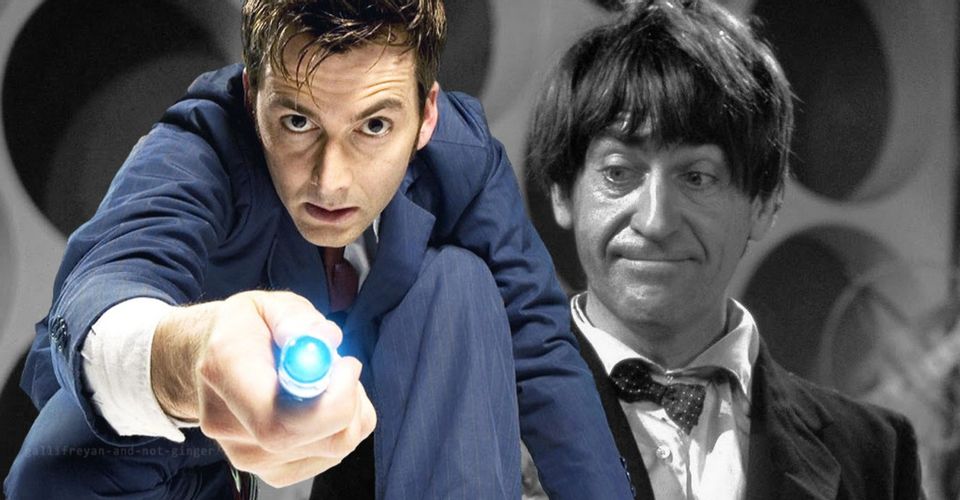Doctor Who’s Sonic Screwdriver Started Out As A Literal Screwdriver

Doctor Who fans are used to seeing The Doctor’s sonic screwdriver perform miracles, but the device’s name was originally very literal. Those familiar with classic-era Doctor Who are generally quick to point out how the current show differs from the first run, which charted The Doctor’s first seven incarnations. From romance in the TARDIS to a heavier focus on companions, there’s no shortage of differences between classic and new Who, but one of the most immediately obvious changes is how the sonic screwdriver is used.
Today, the sonic screwdriver is a weapon, a tool, a scanner and a plot device all rolled into one convenient package, sitting in The Doctor’s pocket ready to be whipped out in a host of different scenarios. Despite only appearing to have a single button, The Doctor’s sonic screwdriver can open doors, interact with machinery, scan the atmosphere and enact repairs in mere moments. Sometimes, The Doctor doesn’t appear to be sonic-ing anything at all; just pointing and hoping for the best. Modern Doctors also have a habit of posing with their sonic screwdrivers like guns – something Doctor Who‘s 50th anniversary episode openly mocked through John Hurt’s War Doctor. But despite the omnipotent nature of the sonic screwdriver in the 2000s, the origins of the device are far more humble.
First introduced in 1968, the sonic screwdriver’s intended purpose was, as the name implies, loosening screws. The Second Doctor landed back on Earth with his two companions, Jamie and Victoria, and something had evidently gone horribly wrong – a gas pipe was generating sea foam in vast quantities, creating an eerie, alien landscape. The Doctor goes to inspect the pipe, but as a meek fellow, can’t dislodge the iron casing. For the first time, the sonic screwdriver is introduced, allowing The Doctor to remove the screws and peek inside the pipe’s control box. Although the original sonic screwdriver was far simpler in design (a small, metallic pencil with a light on the end), the familiar whirring sound was still present. Younger Doctor Who fans might think the term “sonic screwdriver” is just The Doctor’s quaint sense of humor at work, downplaying the power of the device. In truth, the sonic screwdriver was, once upon a time, a literal screwdriver that used sonic waves instead of physical strength.

Given The Doctor’s alien origins (he hadn’t yet been revealed as a Time Lord), it’s natural that his toolkit would contain some futuristic pieces. The sonic screwdriver was science fiction’s answer to a real life, ordinary screwdriver, removing screws that would otherwise be too tough for a manual tool held by an older man. Unlike more recent episodes, it never felt like the Second Doctor was “packing heat” and fans were seldom left asking “why didn’t he just use the sonic?“
While modern Doctor Who undoubtedly changed the role of the sonic screwdriver, the device’s usage was expanded long before Russell T Davies came along. The sonic screwdriver began its transition to a science fiction swiss army knife in the Second Doctor episode “The Dominators,” where it cut through a section of wall, albeit only with a special attachment. But it was Jon Pertwee’s Third Doctor who truly brought the sonic screwdriver to the fore, using his model to open doors, scan new areas, and much more. By “reversing the polarity” during “Frontier In Space,” the Third Doctor proved the sonic screwdriver could be customized to open up new settings, which were subsequently written into the sonic screwdriver’s capabilities.
Despite the sonic screwdriver becoming more versatile in the Third Doctor era, the device was still nowhere near as prominent as it is today, featuring far more sporadically compared to the revived series. But as soon as this fascinating concept was introduced to Doctor Who, writers realized the potential of The Doctor’s new accessory, and quickly began relying on the sonic screwdriver to overcome plot wrinkles and quicken the pace of each episode. The Third Doctor ushered in a new era of Doctor Who, designed to be more accessible and action-based, and expanding the sonic screwdriver’s array of utilities helped deliver that change.
Doctor Who returns with “Revolution of the Daleks” this Christmas on BBC.
About The Author


















